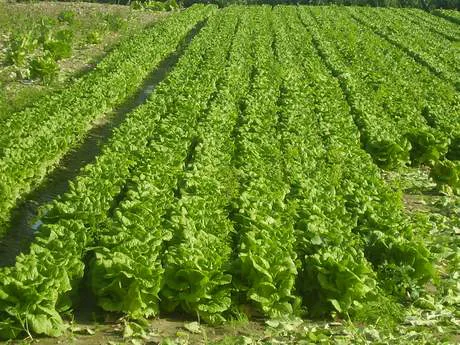Even though the microbial ecology is a scientific topic very important, the information regarding the bacterial community on plant leaf surface, their composition and how it changes according to the geographical and seasonal conditions is quite poor.
For the survey, 106 samples of Romaine lettuce were collected from production regions in California and Arizona from June 2009 to February 2010.

The microbial analyses showed that the total bacterial count averaged between 105 and 106 CFUs per gram leaf, whereas counts of cultivable bacteria were on average one (summer season) or two (winter season) orders of magnitude lower.
Bacteria were identified by using PCR analysis to amplify bacterial 16S rRna gene sequences. The DNA sequence analysis showed that Proteobacteria, Firmicutes, Bacteroidetes and Actinobacteria were the most abundant and representative phyla; while, at genus level, Pseudomonas, Bacillus, Massilia, Arthrobacter and Pantoea were the most consistently found across samples, thus highlighting that they represented the phyllospere microbiota on lettuce.
The foliar presence of Xanthomonas campestris pv. vitians, the causal agent of bacterial leaf spot of lettuce, resulted positively correlated with the presence of bacteria from Alkanindiges genus, while negatively correlated with the presence of bacteria from Bacillus, Erwinia and Pantoea genus.
The survey showed that both the geographic area and the climatic conditions, such as the seasonal variation and storm dust period, affected significantly the differences in bacterial community found in the analysed lettuce samples.
The scientists concluded that, being one of the largest surveys on leaf surface microbiology, this study could be a tool to better understand the causes of the spatial and temporal variation in bacterial community composition lettuce leaves.
For more information:
http://www.ncbi.nlm.nih.gov/pubmed/22534606
